Imagine you’re enjoying your morning coffee, and suddenly, a sharp, unexpected pain shoots through your tooth. Or perhaps a sudden fall leaves you with a chipped front tooth. Dental emergencies strike without warning, leaving us in pain and often confused about what comes next. In these stressful moments, understanding the difference between a “temporary fix” and a “permanent solution” is crucial, not just for immediate relief, but for the long-term health of your smile. It’s easy to think a temporary fix is just a quick patch-up, something lesser than the real deal. But what if I told you that in emergency dentistry, temporary solutions are often a critical, strategic step in a carefully planned journey towards lasting oral health? They’re not just stalling for time; they’re actively playing a vital role in your recovery.
This guide will demystify emergency dental treatment, helping you understand the “why” behind each step, setting clear expectations for your treatment plan, and empowering you to navigate your path from crisis to comprehensive care.
Understanding a Dental Emergency: When Every Second Counts
First, let’s get clear on what actually counts as a dental emergency. It’s more than just a minor ache; it’s any oral issue that requires immediate attention to save a tooth, stop bleeding, alleviate severe pain, or address an infection.

Ignoring these signs can lead to more serious complications, including permanent damage or even systemic health issues.
Common dental emergencies include:
- Severe Toothache: Persistent, throbbing pain that doesn’t subside, especially with swelling. This often indicates infection.
- Chipped, Cracked, or Broken Teeth: Caused by trauma, biting on something hard, or extensive decay.
- Knocked-Out or Chipped (Avulsed) Tooth: A tooth completely dislodged from its socket or chipped due to impact. Time is critical for re-implantation.
- Lost Filling or Crown: While not always painful, it exposes the sensitive inner part of the tooth to damage and decay.
- Abscess or Infection: A painful, pus-filled pocket indicating a serious bacterial infection. Swelling, fever, and persistent bad taste are warning signs.
- Objects Caught Between Teeth: If floss or brushing doesn’t dislodge it, it can cause pain, pressure, and damage.
When facing any of these, don’t delay. Seeking immediate help from a comprehensive dental practice in Orangeville like Viva Dental Orangeville is essential.
Early intervention can significantly impact the outcome, often saving your tooth and preventing further complications.
You can learn more about how we handle urgent situations through our emergency dental services.
The Essential Bridge: What Are Temporary Dental Fixes?
Once you’re at the dentist, the first priority is usually to alleviate pain and stabilize the situation. This is where temporary fixes shine.
Think of them as your essential bridge, designed to provide immediate relief and protection while your mouth prepares for a long-term solution.
What Makes a Fix “Temporary”?
Temporary dental treatments are designed for short-term use, typically lasting from a few days to several weeks or months.
They differ from permanent restorations in their materials, durability, and primary purpose.
Common types of temporary solutions include:
- Temporary Fillings: Often made from softer materials like zinc oxide eugenol (Z.O.E.) or glass ionomer, these fillings seal off a cavity or exposed nerve after decay removal. They are easy to place and remove, and some even release fluoride, offering therapeutic benefits.
- Temporary Crowns: If you need a crown, the dentist will prepare your tooth, then place a temporary crown made of a resin or acrylic material. This protects the sensitive tooth, prevents shifting of adjacent teeth, and maintains aesthetics while your custom permanent crown is being fabricated in a lab.
- Temporary Bridges or Flippers: For a missing tooth or teeth, a temporary bridge or a “flipper” (a removable partial denture) can maintain space, prevent teeth from shifting, and restore appearance and some function while waiting for a permanent bridge or dental implant.
- Medicated Dressings or Splints: In cases of severe trauma, infection, or root canal therapy, special medicated dressings might be placed directly on the affected tooth, or a splint might be used to stabilize loose teeth.
The “Strategic Why” Behind Temporary Solutions
You might wonder,
“Why can’t I just get the permanent fix right away?“
This is a common question, and the answer reveals the strategic importance of temporary treatments:
- Pain Management & Nerve Protection: After a dental emergency, your tooth or surrounding tissues are often inflamed or infected. A temporary filling or crown can immediately seal off the area, protecting the sensitive nerve from further irritation and significantly reducing pain.
- Healing & Diagnosis: Sometimes, the full extent of the damage or infection isn’t immediately clear. A temporary restoration allows the dentist to observe how the tooth responds to initial treatment. It gives the pulp (the tooth’s nerve and blood vessels) time to heal, allowing the dentist to determine if a root canal is needed before placing a permanent restoration.
- Maintaining Space & Alignment: When a tooth is severely damaged or lost, adjacent teeth can drift out of alignment, and opposing teeth can shift. A temporary crown or bridge maintains proper spacing, ensuring that the permanent restoration will fit correctly and your bite remains stable.
- Aesthetic Interim: Especially for front teeth, a temporary crown or flipper restores your smile’s appearance, boosting your confidence while a lab crafts your custom, permanent restoration.
- Protection Against Further Damage: A temporary restoration acts as a shield, preventing bacteria, food particles, and extreme temperatures from reaching the vulnerable tooth structure or exposed nerve.
Caring for Your Temporary Restoration
Just because it’s “temporary” doesn’t mean you shouldn’t care for it properly. Consider teeth whitening services at least once a year.
In fact, good temporary care is crucial for the success of your eventual permanent treatment.
- Be Gentle: Avoid chewing hard, sticky, or crunchy foods on the side with the temporary restoration.
- Brush & Floss Carefully: Brush gently around the area. When flossing, slide the floss out horizontally rather than pulling it straight up, which can dislodge a temporary crown.
- Manage Discomfort: Mild sensitivity is normal. Your dentist may recommend over-the-counter pain relievers.
- What if it Falls Out or Breaks? Don’t panic! Contact your dentist immediately. If you can, try to gently put it back in place using a tiny dab of toothpaste or petroleum jelly as a temporary adhesive until you can see the dentist. Do NOT use super glue or other harsh adhesives.
Debunking the Myths: Why DIY Kits are Dangerous
The internet is full of “at-home temporary filling kits” and other DIY dental remedies.

While they might seem like a quick, cheap fix, they are rarely effective and can be downright dangerous.
- Improper Diagnosis: You can’t diagnose the underlying problem at home. That severe toothache might be a simple cavity, or it could be a deep infection requiring a root canal or extraction. DIY fixes only mask symptoms, allowing serious issues to worsen.
- Poor Adhesion & Contamination: Home kits don’t seal properly, trapping bacteria and food debris, leading to more decay or infection.
- Delaying Proper Care: Relying on DIY solutions often delays professional treatment, increasing the complexity, cost, and potential for permanent damage or tooth loss. According to the Canadian Dental Association, delaying necessary dental care can lead to more extensive and costly treatments down the line.
- Chemical Burns or Allergic Reactions: Unknown materials in some home kits can cause irritation, burns, or allergic reactions in your mouth.
Always consult a dental professional for any dental emergency. Your oral health is too important to risk with unproven home remedies.
Your Long-Term Investment: Permanent Dental Solutions
Once your tooth and surrounding tissues have healed, and your dentist has a clear picture of the situation, it’s time to discuss permanent solutions.
These are designed for durability, aesthetics, and optimal function, restoring your smile for years to come.
What Makes a Fix “Permanent”?
Permanent dental treatments are built to last, using robust materials and precise techniques to fully restore the form, function, and aesthetics of your teeth.
Common types of permanent solutions include:
- Composite or Amalgam Fillings: Used for smaller to moderate cavities. Composite fillings (tooth-colored resin) are popular for their aesthetic appeal, while amalgam (silver) fillings are known for their strength and longevity, particularly in back teeth.
- Porcelain or Zirconia Crowns: These custom-made caps completely cover a damaged tooth, restoring its shape, strength, and appearance. They are meticulously matched to your natural tooth color and are incredibly durable.
- Fixed Bridges: If you have one or more missing teeth, a bridge can span the gap by attaching artificial teeth to natural teeth or dental implants on either side.
- Dental Implants: Considered the gold standard for replacing missing teeth, dental implants are titanium posts surgically placed into the jawbone, acting as an artificial tooth root. A crown, bridge, or denture is then attached to the implant. They offer superior stability, longevity, and preserve bone health. You can explore your dental implant options for more information.
- Permanent Dentures: Custom-fitted removable appliances (full or partial) that replace missing teeth and surrounding tissues. They can also be supported by implants for greater stability.
Choosing Your Permanent Option: Factors to Consider
Deciding on the best permanent solution involves several factors, and your dentist will guide you through the process:
- Extent of Damage: How much tooth structure remains? Is the root affected?
- Location of the Tooth: Front teeth often prioritize aesthetics, while back teeth need maximum strength for chewing.
- Cost & Budget: Different materials and procedures have varying costs. For example, dental implants might have a higher upfront cost but offer long-term value.
- Longevity & Durability: How long do you expect the restoration to last? Implants can last a lifetime with proper care.
- Aesthetics: How important is it for the restoration to blend seamlessly with your natural teeth?
- Overall Oral Health: Your gum health, bone density, and habits (like grinding) will influence the best choice.
- Lifestyle: Do you have specific dietary needs or activities that might impact the restoration?
Navigating Your Full Treatment Journey: From Crisis to Comprehensive Care
Understanding that your emergency dental treatment is a journey, not a single event, helps manage expectations and ensures the best possible outcome.
Your Temporary-to-Permanent Timeline
While every case is unique, here’s a general idea of how the journey might unfold:
- Emergency Visit (Day 0): Pain relief, stabilization, and placement of a temporary fix (e.g., temporary filling, crown, splint).
- Healing Period (Days/Weeks): Your mouth heals, inflammation subsides, and the dentist assesses the tooth’s long-term prognosis. For crowns, this is when the lab fabricates your custom piece.
- Follow-Up & Permanent Placement (Weeks/Months): Once stable, the temporary fix is removed, and the permanent restoration is placed. This might involve additional appointments, especially for implants that require bone integration.
This staged approach, allowing for healing and precise planning, is why temporary solutions are so invaluable.
Financial & Insurance Considerations
Dental emergencies can be unexpected financially. Here are some tips:

- Discuss Costs Upfront: Ask your dental team for a detailed breakdown of costs for both temporary and permanent treatments.
- Understand Your Insurance: Know what your dental insurance plan covers for emergency care, temporary restorations, and different types of permanent procedures. Don’t hesitate to ask your dental office to help you understand your benefits.
- Payment Plans: Many dental practices offer payment plans to help manage the costs of extensive treatments.
Read more on dental coverage options for seniors and low-income families
Long-Term Care & Maintenance for a Lasting Smile
Once your permanent restoration is in place, consistent oral hygiene and regular dental check-ups are key to its longevity and your overall oral health.
- Brush & Floss Regularly: Maintain excellent oral hygiene, just as you would for your natural teeth.
- Routine Check-ups: Regular visits to your dentist for general dentistry services will allow them to monitor your restorations, check for any issues, and perform professional cleanings.
- Avoid Bad Habits: Don’t chew on ice, use your teeth as tools, or bite hard candy, as these can damage even permanent restorations.
Your Next Steps After a Dental Emergency
Experiencing a dental emergency is stressful, but understanding the treatment process can bring immense peace of mind. Temporary fixes are not just holding patterns; they are crucial, active steps that pave the way for successful, long-lasting permanent solutions. They manage pain, protect your tooth, allow for healing, and ensure the best possible outcome for your oral health journey. If you’re experiencing a dental emergency or have questions about your treatment options, don’t hesitate to reach out.
Our team at Viva Dental Orangeville is dedicated to providing patient-centered care, guiding you through every step of your recovery, and ensuring you receive the attention needed for optimal dental health.
Frequently Asked Questions (FAQ)
Q1: Is a temporary filling always necessary before a permanent one?
Not always, but often. For small, straightforward cavities, a permanent filling might be placed immediately. However, if there’s extensive decay, infection, or nerve involvement, a temporary filling (sometimes medicated) allows the tooth to heal and helps the dentist assess its vitality before committing to a permanent solution like a filling or crown.
Q2: How long can I keep a temporary crown or filling?
Temporary crowns and fillings are designed to last a few weeks to a few months. While some may last longer, it’s crucial not to delay your permanent appointment. Prolonged use can lead to the temporary restoration breaking, falling out, or allowing bacteria to leak in, causing new decay or infection under the restoration.
Q3: What happens if my temporary filling or crown falls out?
Contact your dentist immediately. If possible, rinse your mouth with warm salt water. If it’s a temporary crown and you have dental adhesive (like denture adhesive) or even toothpaste, you can try to gently reseat it until you can get to the dentist. Do not use super glue or other household adhesives, as these are toxic and can cause further damage.
Q4: Will my insurance cover both temporary and permanent treatments?
Most dental insurance plans cover a portion of both temporary and permanent dental treatments, especially for emergencies. However, coverage varies widely depending on your specific plan and the type of treatment. It’s always best to contact your insurance provider or have your dental office help you verify your benefits before treatment.
Q5: How do permanent dental implants compare to bridges for replacing missing teeth?
Both are excellent options. Dental implants are titanium posts surgically placed into the jawbone, acting as a natural tooth root. They are very stable, preserve bone health, and don’t require altering adjacent teeth. Bridges involve crowning the adjacent teeth to support the prosthetic tooth. Implants generally have a higher upfront cost but often last longer and offer superior benefits for bone health. Your dentist will help you choose the best option based on your specific situation.



























